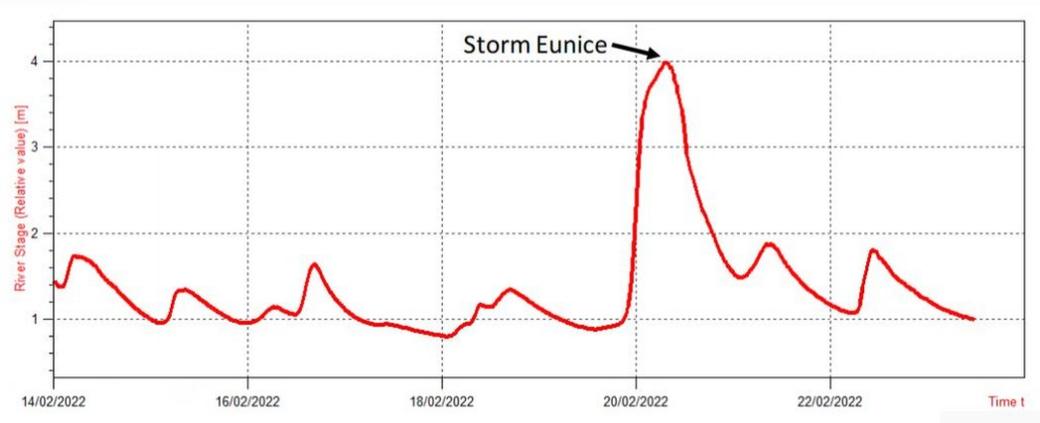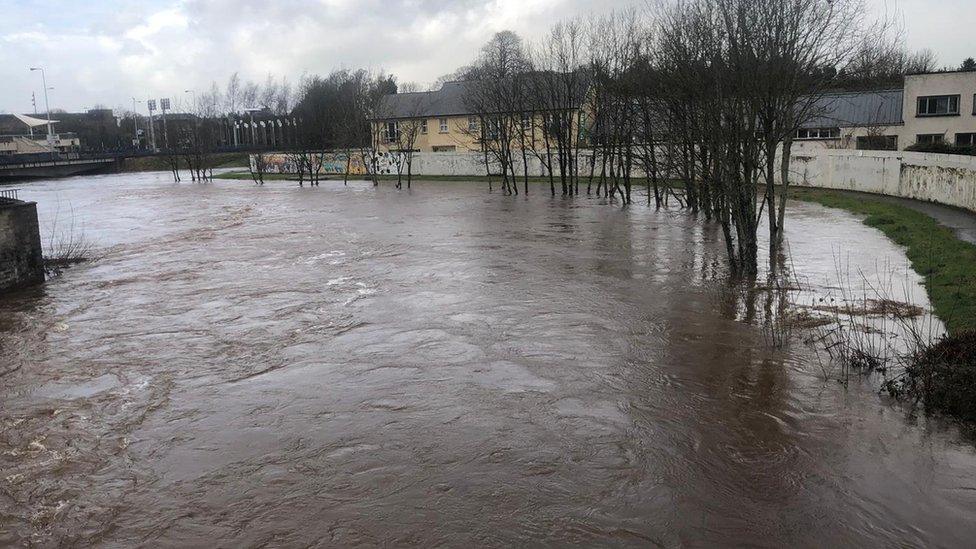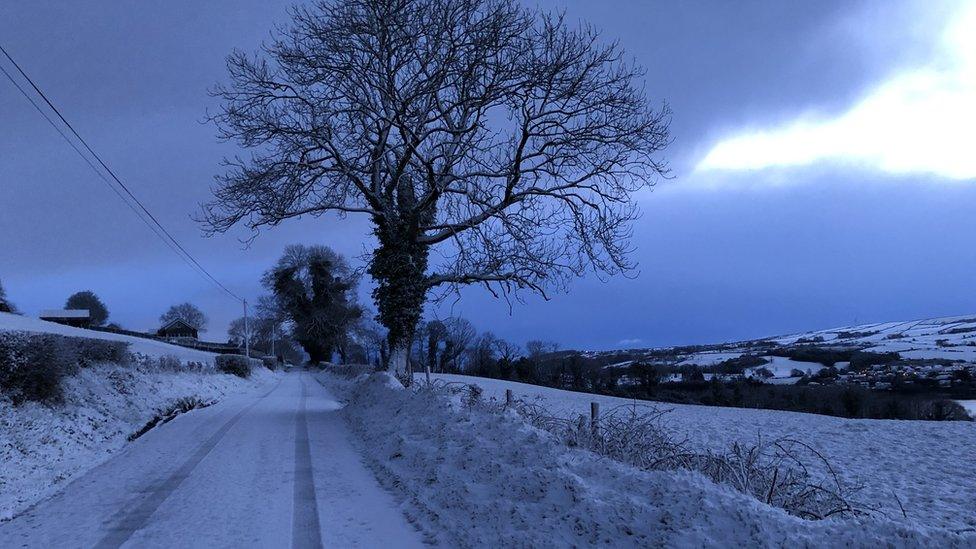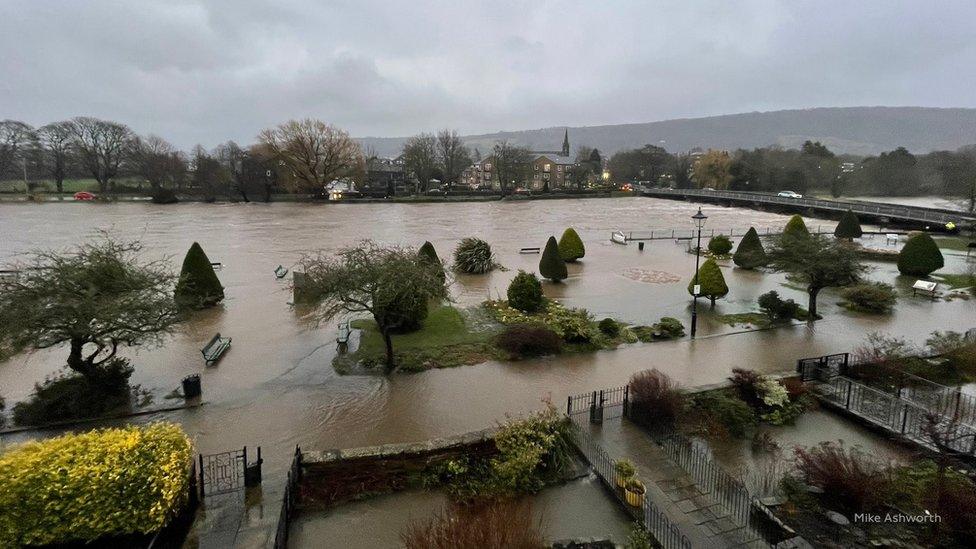Storm Eunice, Dudley and Franklin: A week of unusual NI weather
- Published

Strong winds making waves on the north coast of Northern Ireland
The unusual hat-trick of storms last week brought plenty of disruption to Northern Ireland, with Storms Dudley, Eunice and Franklin bringing down trees and causing power cuts.
It also brought flooding to some areas more than others.
Some rivers became particularly high, especially with water build-up after Storm Eunice.
The north and east bore the brunt of the highest wind gusts, while the west saw most of the flooding.
This in itself isn't unusual as the west is prone to more rainfall with prevailing winds and weather coming in off the Atlantic.
The Department of Infrastructure (DfI) dealt with about 500 incidents during the spell of the three storms.
Although flooding of homes and premises can't be totally avoided, the management of flood risk in Northern Ireland is quite effective.
Boho residents "fed up with flooding" in Fermanagh community
Jonathan McKee is the director of DfI Rivers, the flood defence and drainage authority for Northern Ireland.
He said about one in 18 properties could be prone to flooding here, compared to one in six in other parts of the UK.
One key aim is to prevent increased flood risk through appropriate land-use planning, with a presumption against development on known flood plains.


Some areas are more prone to flooding than others.
This is due not only to amounts of rain but also river catchment characteristics and soil type.
What makes an area more likely to flood?
Rocky, clay and sandy soils don't absorb as much rainfall as bog-type soils and flooding can be exacerbated in those areas as a result.
Topography also plays a part and proximity to hills and mountains with steep catchments, such as the Sperrins or Mournes, can lead to an increased risk of flooding.
The west - with generally higher annual rainfall - is more prone to flooding, which is detrimental to rural communities.
But when a prolonged or heavy rainfall event occurs over eastern areas, the impacts can be higher due to more densely populated urban areas.
Trees can reduce flood risk but, when there is a lot of rain, low-lying ground eventually becomes saturated and they don't have any significant impact in reducing flooding in these locations.

There were fears the Drumragh River in Omagh would burst its banks before Storm Franklin even arrived
Upland planting can help absorb and intercept water before it seeps downhill.
However the effects are not necessarily as significant as hoped, and it takes a long time for trees to mature.
Nevertheless tree planting is still important in natural flood risk management.
After the storms of the last week or so, it has remained unsettled, windy and wet at times.
Snow has also been an added hazard, especially in areas that least need it.
With snowmelt and a bit more rain at times through the weekend, the risk of flooding is still going to be an issue for some, with the ground already saturated.
High pressure does start to build for the first half of next week, when conditions will become more settled and generally drier.
Related topics
- Published24 February 2022

- Published21 February 2022

- Published21 February 2022

- Published20 February 2022
